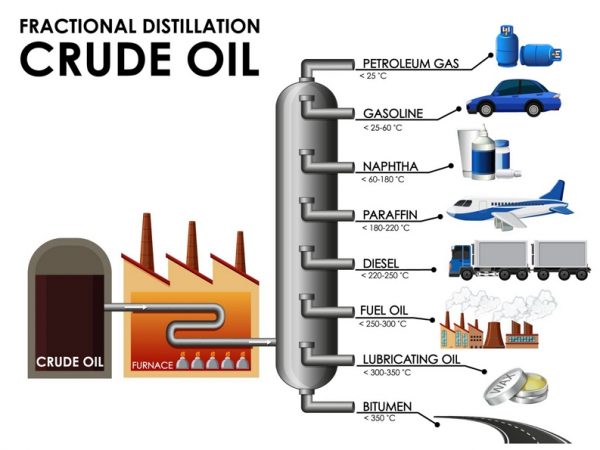ENERGIES
Energies When referring to the word “energies” in the context of commodities and markets, it typically involves energy commodities. Energy commodities are natural resources used for producing energy, and they play a crucial role in various sectors of the global economy. Here are some of the key energy commodities:
Crude Oil:
Definition: Unrefined petroleum extracted from the ground.
Uses: Primary source for the production of gasoline, diesel, jet fuel, and various other petrochemical products.
Market: Traded on commodities exchanges. West Texas Intermediate (WTI) and Brent crude are among the most commonly traded benchmarks.
Natural Gas:
Definition: A colorless and odorless gas composed mainly of methane.
Uses: Used for heating, electricity generation, and as a fuel for vehicles. Also an important feedstock for the production of chemicals.
Market: Traded on commodities exchanges. Henry Hub in the United States is a key benchmark for natural gas prices.
CRUDE OIL
Perhaps the most controversial debate of our age is the amount of oil we have left to pump from the earth. Some speculate as many as hundreds of years, while others say we may experience an output shortage as early as 2015. On top of this, many speculate that OPEC purposefully manages the outflow of major oil supplies in order to maintain high prices in the markets.
The two major types of Crude Oil that traders and speculators focus on today are Brent Crude and West Texas Intermediate (WTI). The WTI crude is used as a benchmark in oil pricing, is most cited in oil prices, and is a very light Crude Oil. Brent Crude, on the other hand, comes from the North Sea, is not light like WTI crude, and prices two-thirds of internationally traded Crude Oil.

Crude Oil is petroleum that is acquired directly from the ground. Crude Oil was formed millions of years ago from the remains of tiny aquatic plants and animals that lived in ancient seas. Ancient societies such as the Persians, 10th century Sumatrans, and pre-Columbian Indians believed that Crude Oil had medicinal benefits. Around 4,000 BC in Mesopotamia, bitumen, tarry crude, was used as caulking for ships, as a setting for jewels and mosaics, and as an adhesive to secure weapon handles.
The walls of Babylon and the famed pyramids were held together with bitumen, and Egyptians used it for embalming. During the 19th century in America, an oil find was often met with dismay. Pioneers, who dug wells to find water or brine, were disappointed when they struck oil. It wasn’t until 1854, with the invention of the kerosene lamp, that the first large-scale demand for petroleum emerged.
Crude Oil is a relatively abundant commodity. The world has produced approximately 650 billion barrels of oil, but another trillion barrels of proved reserves have yet to be extracted. Crude Oil was the world’s first trillion-dollar industry and accounts for the single largest product in world trade.
BRENT OIL
Originally Brent referred to oil extracted from the Brent oilfield located in the North Sea off the coast of the UK, however, for various reasons Brent now refers to four different crude oil grades extracted from various wells in the North Sea – Brent blend, Forties blend, Osberg, and Ekofisk (together also known as BFOE). This mixing of the four oil grades actually made Brent a heavier oil, although it is still considered to be relatively light and low in sulfur.
While Brent is relatively heavier than it was in the past, it is still ideal for oil refinement and the fact that it is waterborne from oil fields near to the coast of the UK and Norway makes it all the more attractive.

This makes Brent crude oil very accessible for means of transportation. The oil can be offloaded from the FPSO directly onto oil tankers and easily transported across the world by sea. It can also be sent a short distance away to oil terminals like Sullom Voe Terminal in the Shetland Islands, where it can be stored before loading on to tankers.
It is also be sent via pipeline to refineries and storage facilities on the coast of the UK. The relative ease of transportation and its high quality makes Brent an attractive investment and plays a major part in the pricing of crude oil as well as in the adoption of Brent as the major oil benchmark price globally.
NATURAL GAS
Natural Gas is a fossil fuel that is colorless, shapeless, and odorless in its pure form. It is a mixture of hydrocarbon gases formed primarily of methane, but it can also include ethane, propane, butane, and pentane. Natural Gas is combustible, clean burning, and gives off a great deal of energy.
Around 500 BC, the Chinese discovered that the energy in Natural Gas could be harnessed. They passed it through crude bamboo-shoot pipes and then burned it to boil seawater to create potable fresh water. Around 1785, Britain became the first country to commercially use Natural Gas produced from coal for streetlights and indoor lights.

In 1821, William Hart dug the first well specifically intended to obtain Natural Gas and he is generally regarded as the “father of Natural Gas” in America.
There is a vast amount of Natural Gas estimated to still be in the ground in the U.S. Natural Gas as a source of energy is significantly less expensive than electricity per Btu (British thermal unit). Btu is a traditional unit of energy equal to about 1.055 joules or approximately the amount of energy needed to heat one pound of water.
The Natural Gas futures contract calls for the delivery of Natural Gas representing 10,000 million British thermal units (mmBtu) at the Henry Hub (a distribution hub) in Louisiana, which is the nexus of 16 intra- state and inter-state pipelines.
